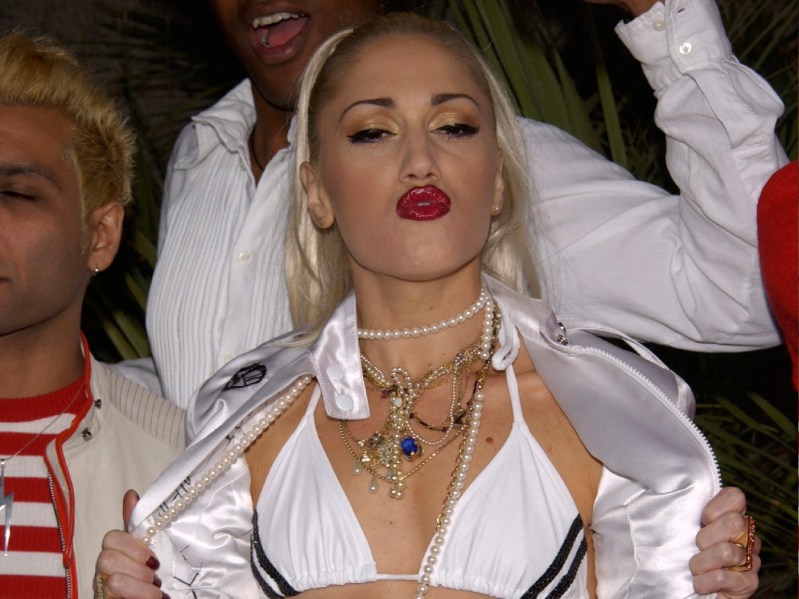Gwen Stefani began her career as the lead singer of a ska band and now the three-time Grammy Award winner can truly say she’s tried it all. She’s gone country, been a part of a hit reality show, and successfully runs her own fashion empire. Early on in her career, however, Stefani picked some bold red carpet outfit choices that she likely wouldn’t try again in this day and age.
Videos by Suggest
Gwen Stefani’s Red Hot Red Carpet Stylings
If there’s one thing Gwen Stefani knows as a former coach on The Voice and current wife of country crooner Blake Shelton, it’s how to make an impression on the red carpet. After all, she’s been doing just that since she first burst onto the scene with her band No Doubt in 1995.

Although the band was formed in 1986, it wasn’t until 1991 that they signed with Interscope Records. The record deal was a huge step forward for the ska band, but it took them a while to get their sound to take off since grunge was the more popular sound of the era.
Still, the band persisted and in 1995, their 3rd studio album Tragic Kingdom became a certified hit thanks to classic songs like “Don’t Speak,” “Spiderwebs,” and “Just A Girl.” When No Doubt was at the height of its popularity, however, Stefani made the move to go solo. It was a definite risk, but judging by her success, it was a risk well worth taking.
Fashion Forward Icon

It’s not just in her music career that Stefani has taken risks. In 2004, the same year she released her first solo album Love. Angel. Music. Baby., Stefani also launched her own fashion line of essentially the same name, L.A.M.B. The fashion line was inspired by Japanese, Guatemalan, and Jamaican styles and it’s obvious why the brightly colored line was a favorite among celebrities.

Those international styles influenced more than just Stefani’s fashion line. In early photos, back when she was still an integral part of No Doubt, Stefani was often shown wearing accessories and garb of South Asian origin. It wasn’t all that unusual to see the singer wearing a bindi or other type of forehead jewelry typically associated with South Asian cultures in addition to her brightly colored hair.
Stefani Pushed The Boundaries

Though today this behavior may be called “cultural appropriation,” it was very common, especially in the 90s, for white artists to wear clothing or accessories from other cultures, with varying degrees of success. The main argument against cultural appropriation is the fact that some marginalized peoples are ostracized or even oppressed for expressing their cultural identity.
Meanwhile, others of a more privileged race or national origin are celebrated for wearing the exact same thing as a costume. There are also arguments about who profits from these cultural differences: the people of the culture or those outside of it who saw potential to make money from exploiting it.
The Look She Probably Won’t Rewear

The Kardashian family, primarily the youngest sibling Kylie Jenner, has often been accused of culturally appropriating African-American culture. Despite relying heavily on Japanese culture, including her iconic Harajuku Girls, Stefani has largely escaped similar accusations. That being said, we’re sure she wouldn’t replicate the look she wore in one of her earliest photos.
More Stories From Suggest
Emily Blunt’s First Red Carpet Featured Controversial Trend We’re Happy Is Over
Taraji P. Henson’s Outfit Choice During First Red Carpet Is A ’00s Catastrophe
Cate Blanchett Is Unrecognizable In First Red Carpet Photos: See How She Changed Over The Years
